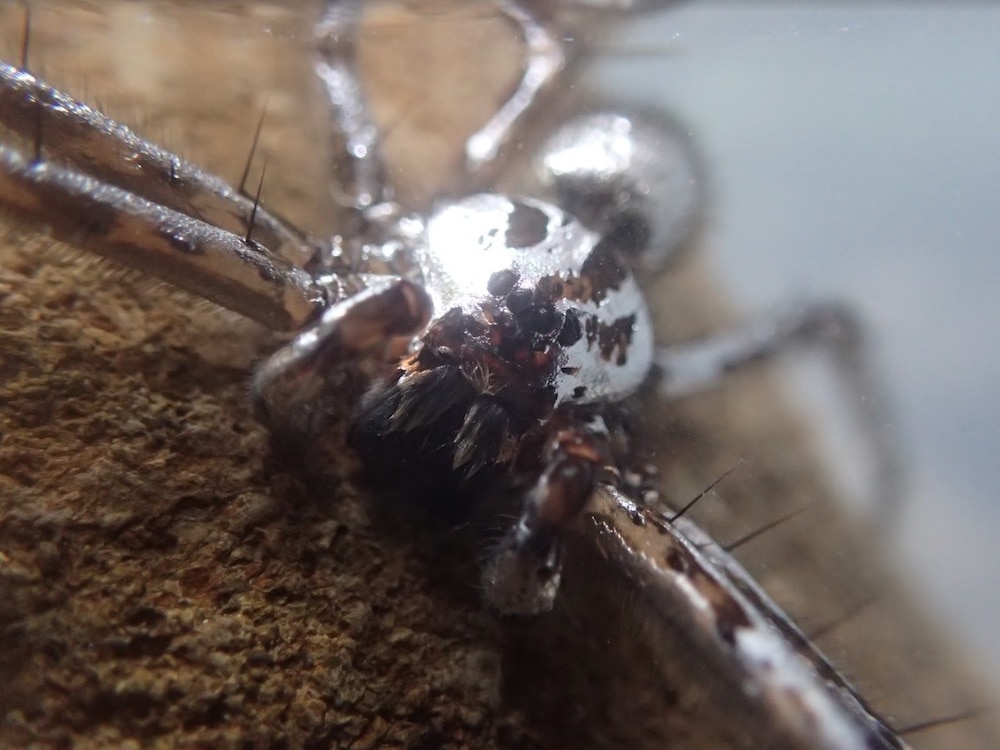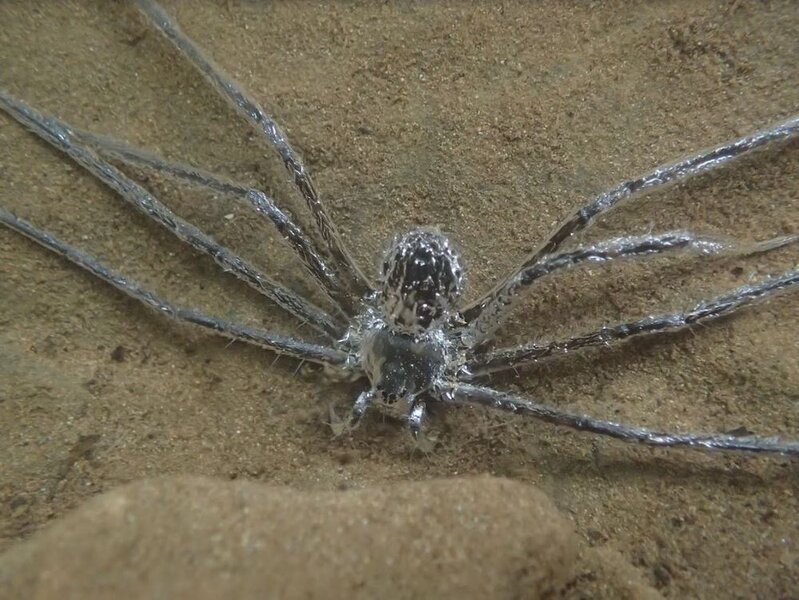Create a free profile to get unlimited access to exclusive videos, sweepstakes, and more!
These spiders use fuzzy built-in scuba suits to hide underwater
If sharks and jellyfish weren't enough, now we have to deal with underwater spiders.

In 1988, Australian screenwriter Andrew Wright participated in a diving expedition to the Pannikin Plains cave system, which turned to disaster when flash floods collapsed the entrance to the caves. That real life experience was captured by a documentary crew and went on to inspire the feature film Sanctum, which Wright co-wrote with John Garvin.
The movie finds the dive crew fighting for their lives as water rushes in all around them and they search for a path back to the surface. Both the fictional film and the real experiences that inspired it serve as a reminder that humans court danger any time they enter the water. For the tropical spider Trechalea extensa, however, retreating to the water could mean the difference between life and death.
Lindsey Swierk from the Department of Biological Sciences at Binghamton University, Macy Petrula from Department of Biological Sciences at California State University Sacramento, and Patricia Esquete from The Department of Biology and Center for Environmental and Marine Studies at the University of Aveiro studied the novel behavior of these diving spiders. Their findings were published in the journal Ethology.
The team didn’t originally intend to study diving behavior in T. extensa, but when they saw them retreating into the water, they decided to switch gears.
“We were marking the individuals that were part of the study. Normally, this species runs away a few centimeters when we attempt to put a mark on them, and eventually hides underneath a rock or a log. We were surprised to see one of the spiders diving; this was unusual, so we decided to study that behavior more in depth,” Esquete told SYFY WIRE.
One individual spider was observed retreating to the water and staying there for more than 30 minutes, though that may not be the limits of their underwater survival abilities. Future observations could push the number higher.
Generally speaking, running to the water isn’t a recommended survival strategy for spiders. The water threatens to get into respiratory organs and cold temperatures wick away heat pretty quickly. In many cases, it’s a safer bet to stay on the surface and deal with a threat. This species, however, has evolved a built-in scuba suit which insulates them and keeps them dry.
“It seems likely that the coating of air is formed by air being trapped by the spider’s body hairs when it goes underwater. You can see air bubbles clinging to the hairs if you look closely,” Swierk said. “Since spiders don’t breathe the same way that humans do, it's hard to tell from a video if the spider is actually respiring or not. Small, ectothermic animals can survive on relatively little oxygen for a long time. We expect that a really important function of the coating of air is that it keeps the spider's respiratory surfaces dry.”
There have previously been reports of other spiders carrying out similar behaviors, though they have not been clearly documented. There is, of course, also the famous diving bell spider which creates an oxygen-filled underwater house out of webbing and spends its entire life underwater. T. extensa, however, is an entirely unrelated species which uses not a designed structure, but adaptations on its body to survive underwater, at least for a short time. Diving underwater may save a spider from an imminent threat in the short-term, but as with all things in nature, there is a cost.
“Our observation suggests that these spiders stay very still underwater, perhaps to avoid attracting the attention of whatever was chasing them initially. There aren't many serious predatory threats underwater in this spider's habitat. It seems more likely that the greatest underwater costs are the spider's lost opportunities on land for things like food, mates, or thermoregulation,” Swierk said.
At least in that respect, spiders and humans aren’t all that different. T. extensa has evolved to spend some of its time in the water, but you never know when the environment might change and going for a swim becomes the last thing you ever do. At least they don’t have to bother with rebreathers.

























